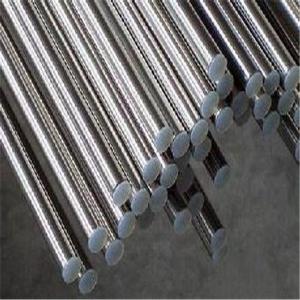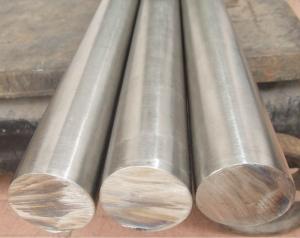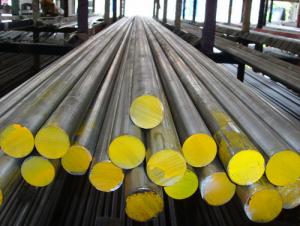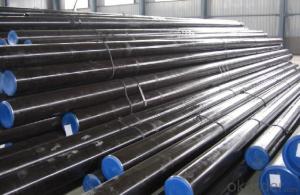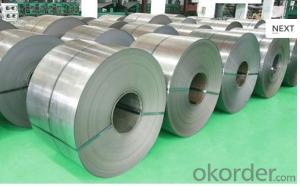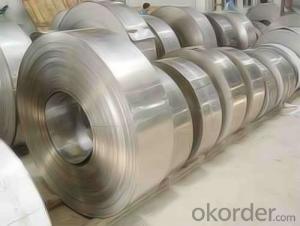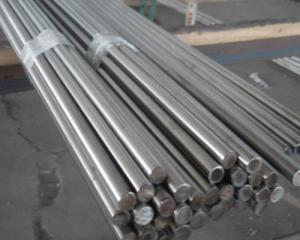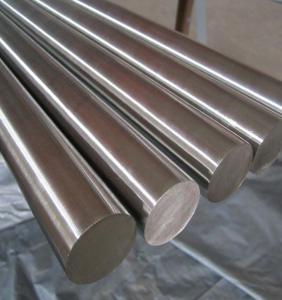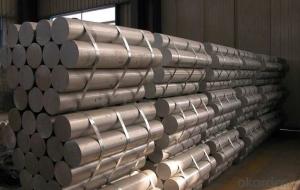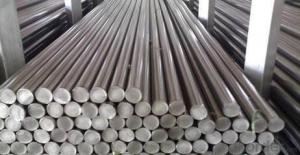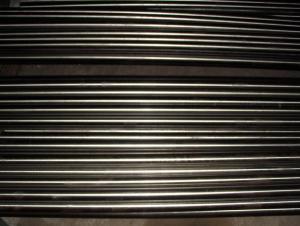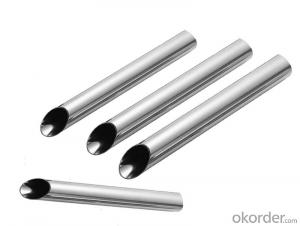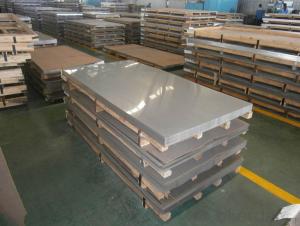Stainless Steel round bar with CE CertificateChina Supplier
- Loading Port:
- Shanghai
- Payment Terms:
- TT OR LC
- Min Order Qty:
- 5 m.t.
- Supply Capability:
- 5000 m.t./month
OKorder Service Pledge
OKorder Financial Service
You Might Also Like
Item specifice
China Supplier stainless steel round bar with CE Certificate
PRODUCT DESCRIPTION
Product Description
1, Diameter: 8mm-250mm rounds
5mm-9mm rods
2, Length: 2m, 3m, 5.8m, 6m or customized
3, Standard: GB, ASTM, AISI, SAE, DIN, JIS, EN
OEM technology - send detailed technical parameters for accurate quotation.
2, Produce Process: smelt iron - EAF smelt billet - ESR smelt billet -
hot rolled or forged to get the steel round bar and plate
3, Heat Treatment: annealing, normalizing, tempering, quenching
4, Surface Treatment: Black, Polished, Galvanized
5, Quality Assurance: We accept third party inspection for all orders.
You can ask testing organizations such as SGS, BV, etc. to test our products before shipping.
PRODUCTS SHOW
Products Show
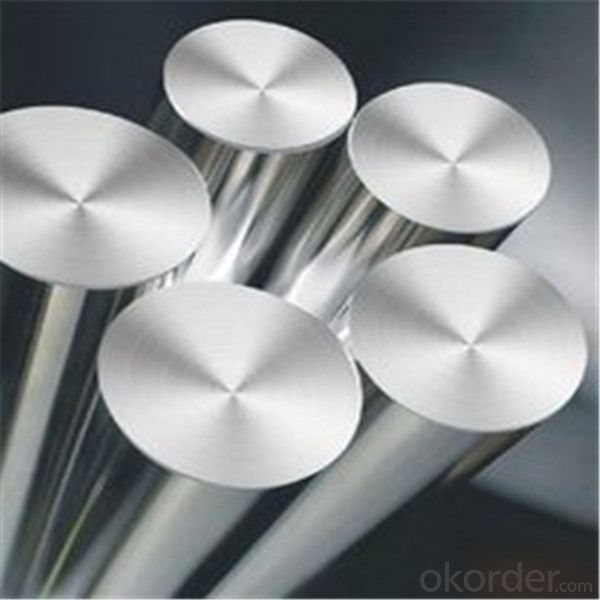

PRODUCTS&APPLICATION
Product Overviews
| Product Name | Typical Grades | Diameter(mm) | Standard adopted |
| Carbon Steel | 20 (1020/S20C/C22) | Ø16-Ø300 |
GB/SAE/JIS/DIN
|
| 40 (1040/S40C/C40) | |||
| 45 (1045/S45C/C45) | |||
| Bearing Steel | GCr9 (51100/SUJ1) | Ø12-Ø250 | |
| GCr15 (52100/SUJ2/100Gr6) | |||
| GCr9SiMn (A485-Gr.1/SUJ3) | |||
Cr-Mo Steel | 20Cr (5120/SCr420H/20Cr4) | Ø12-Ø250 | |
| 40Cr (5140/SCr440/41Cr4) | |||
| 42CrMo(4140/SCM440/42CrMo4) | |||
| Gear Steel | 20CrNiMo | Ø16-Ø600 | |
| 20CrMn(5115/SMnC420/20MnCr5) | |||
| 20CrNiMo(8620/SNCM220/20CrMiMo2) |
Application
| Carbon Steel | Mold bottom, Plastic mold, Construction machinery parts Automobile parts, Security grills, Screens, Construction |
| Bearing Steel | Aerospace, Navigation, Nuclear energy, Chemical industry Electronic information, Petrochemical, Instrument and meter Transportation |
| Cr-Mo Steel | Mechanism & Fasteners gear, Stressed components for vehicles Engines and machines, Parts of larger cross-section |
| Gear Steel | All kinds of gears, Statically and dynamically stressed component for vehicles Engines and machine, Larger cross-section parts, Crankshafts |
F A Q
FAQ
1, Your advantages?
professional products inquiry, products knowledge train (for agents), smooth goods delivery, excellent customer solution proposale
2, Test & Certificate?
SGS test is available, customer inspection before shipping is welcome, third party inspection is no problem
3, Payment Terms?
30% TT as deposit and 70% before delivery.
Irrevocable L/C at sight.
4, Trading Terms?
EXW, FOB, CIF, FFR, CNF
PACK & DELIVERY
Packaging & Delivery
1, Packaging: seaworthy package or as required
2, Delivery: 35-45 days or based on quantity
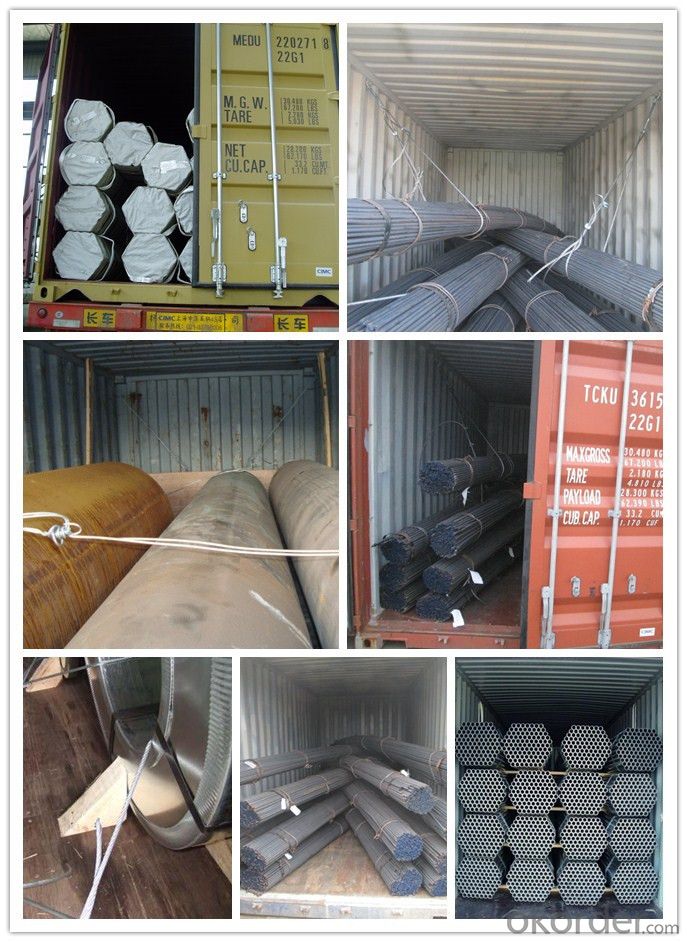
- Q:Can stainless steel bars be used in outdoor applications?
- Stainless steel bars are indeed suitable for outdoor use. This material is renowned for its exceptional resistance to corrosion, rendering it perfect for outdoor settings that encounter moisture, humidity, and other challenging circumstances. In outdoor applications like construction, architecture, and landscaping, stainless steel bars are widely utilized. They possess the remarkable ability to endure the elements, including rain, snow, and UV exposure, without succumbing to rust or deterioration. Furthermore, stainless steel bars exhibit remarkable strength and durability, rendering them ideal for outdoor structures and fixtures that necessitate stability and extended lifespan. In essence, stainless steel bars can be confidently relied upon for outdoor applications due to their corrosion resistance and capacity to withstand diverse weather conditions.
- Q:Can stainless steel bars be used in brewing and distilling equipment?
- Yes, stainless steel bars can be used in brewing and distilling equipment. Stainless steel is a popular material choice for these industries due to its excellent corrosion resistance, durability, and hygienic properties. Stainless steel bars can be used to manufacture various components of brewing and distilling equipment, such as tanks, fermenters, piping, fittings, valves, and agitators. The material's resistance to corrosion ensures that it can withstand the harsh and corrosive environments typically found in brewing and distilling processes, including exposure to acids, chemicals, and high temperatures. Additionally, stainless steel is easy to clean and maintain, which is essential for ensuring the purity and quality of the final product. Overall, stainless steel bars are a reliable and widely accepted choice for brewing and distilling equipment.
- Q:What are the different types of stainless steel bars used in pharmaceutical equipment?
- There are several different types of stainless steel bars commonly used in pharmaceutical equipment due to their excellent corrosion resistance and hygienic properties. Some of the most commonly used types include: 1. Austenitic Stainless Steel: This type of stainless steel is the most widely used in pharmaceutical equipment due to its high corrosion resistance and excellent formability. It contains high amounts of chromium and nickel, making it resistant to various chemicals and ideal for applications that require good hygiene. 2. Martensitic Stainless Steel: This type of stainless steel is known for its high strength and hardness. It contains a higher carbon content compared to austenitic stainless steel, which gives it its characteristic strength. Martensitic stainless steel is commonly used in pharmaceutical equipment where high mechanical strength is required. 3. Ferritic Stainless Steel: Ferritic stainless steel is known for its excellent resistance to stress corrosion cracking and high resistance to oxidation. It contains high levels of chromium, which provides good corrosion resistance. Ferritic stainless steel is commonly used in pharmaceutical equipment for applications where high temperature resistance is required. 4. Duplex Stainless Steel: Duplex stainless steel is a combination of both austenitic and ferritic stainless steels, providing a balance between their properties. It offers excellent corrosion resistance, high strength, and good weldability. Duplex stainless steel is commonly used in pharmaceutical equipment where both corrosion resistance and strength are required. The specific type of stainless steel bar used in pharmaceutical equipment will depend on the specific requirements of the application, such as the type of chemicals or substances it will come into contact with, the level of hygiene required, and the mechanical strength needed.
- Q:Can stainless steel bars be etched?
- Indeed, it is possible to etch stainless steel bars. Etching serves as a technique employed to produce intricate designs, patterns, or markings on the surface of stainless steel. This involves the application of an acid or chemical solution to the metal's surface, which selectively eliminates exposed areas to achieve the desired design. By employing the etching process, one can create enduring and visually appealing markings on stainless steel bars. Consequently, these bars become remarkably adaptable for diverse applications, including signage, decorative components, or identification objectives.
- Q:What are the different types of stainless steel bars used in automotive body panels?
- There are primarily two types of stainless steel bars used in automotive body panels: austenitic stainless steel and ferritic stainless steel. Austenitic stainless steel is highly corrosion-resistant and offers good formability, making it suitable for various body panel applications. Ferritic stainless steel, on the other hand, is less formable but provides excellent resistance to stress corrosion cracking, making it ideal for structural components of automotive body panels.
- Q:Can stainless steel bars be machined?
- Yes, stainless steel bars can be machined. Stainless steel is a versatile material that can be shaped and formed using various machining processes. These processes may include cutting, drilling, milling, turning, and grinding. However, it is important to note that stainless steel has unique properties that can make it more challenging to machine compared to other materials. For example, stainless steel is known for its high strength and hardness, which can lead to increased tool wear during machining. Additionally, its high thermal conductivity can cause heat buildup during the machining process. Therefore, it is crucial to use appropriate cutting tools, coolants, and machining techniques to ensure successful and efficient machining of stainless steel bars.
- Q:What are the different methods of joining stainless steel square bars?
- There are several different methods for joining stainless steel square bars. The choice of method depends on factors such as the specific application, the desired strength and durability of the joint, and the available equipment. 1. Welding: This is one of the most common methods of joining stainless steel square bars. Different welding techniques can be used, such as gas tungsten arc welding (GTAW or TIG), gas metal arc welding (GMAW or MIG), or shielded metal arc welding (SMAW or stick welding). Welding provides a strong and durable joint, but it requires skilled personnel and specialized equipment. 2. Brazing: Brazing involves using a filler metal that has a lower melting point than the stainless steel bars. The filler metal is heated until it liquefies and flows into the joint, creating a bond between the square bars. Brazing is often used for joining stainless steel bars when the temperature required for welding may cause distortion or damage to the material. 3. Mechanical Fasteners: Another method of joining stainless steel square bars is through the use of mechanical fasteners such as nuts, bolts, screws, or rivets. These fasteners create a strong and reliable joint, which can be disassembled if needed. Mechanical fastening is a good option when welding or brazing is not feasible or desired. 4. Adhesive Bonding: Adhesive bonding involves using specialized adhesives to join stainless steel square bars. The adhesive creates a bond between the surfaces, providing strength and durability. Adhesive bonding is often used when the joint needs to be aesthetically pleasing, as it does not leave any visible marks or discoloration like welding or brazing. 5. Interlocking Joints: Interlocking joints involve modifying the shape of the stainless steel square bars to fit together tightly. This can be achieved through techniques such as tongue and groove, lap joints, or dovetail joints. Interlocking joints provide good strength and stability, but they require precise machining or fabrication. Each of these methods has its own advantages and disadvantages, and the choice of method should be based on the specific requirements of the project, as well as the available resources and expertise.
- Q:What is the weight of a stainless steel bar?
- The weight of a stainless steel bar can vary depending on its size and dimensions. Stainless steel is a dense material, so even a small bar can have a significant weight. To determine the exact weight, you would need to know the length, width, and thickness of the bar, as well as the density of the specific type of stainless steel being used. Once these measurements are known, you can use a formula to calculate the weight. For example, to calculate the weight of a rectangular stainless steel bar, you would multiply the length, width, and thickness, and then multiply that by the density of stainless steel.
- Q:How do stainless steel bars resist citric acid?
- Stainless steel bars resist citric acid due to their high chromium content, which forms a passive oxide layer on the surface of the metal. This oxide layer acts as a protective barrier, preventing the citric acid from directly contacting and corroding the steel.
- Q:What is the price range for stainless steel bars?
- The cost of stainless steel bars may differ based on a multitude of factors, including the grade of stainless steel utilized, the dimensions and configuration of the bars, and the quantity being procured. Typically, the price range for stainless steel bars extends from approximately $1 to $10 per pound. Elevated prices may be expected for superior grades, larger dimensions, and unique shapes. It is advisable to reach out to stainless steel suppliers or refer to online marketplaces for up-to-date pricing details due to potential fluctuations.
1. Manufacturer Overview |
|
|---|---|
| Location | |
| Year Established | |
| Annual Output Value | |
| Main Markets | |
| Company Certifications | |
2. Manufacturer Certificates |
|
|---|---|
| a) Certification Name | |
| Range | |
| Reference | |
| Validity Period | |
3. Manufacturer Capability |
|
|---|---|
| a)Trade Capacity | |
| Nearest Port | |
| Export Percentage | |
| No.of Employees in Trade Department | |
| Language Spoken: | |
| b)Factory Information | |
| Factory Size: | |
| No. of Production Lines | |
| Contract Manufacturing | |
| Product Price Range | |
Send your message to us
Stainless Steel round bar with CE CertificateChina Supplier
- Loading Port:
- Shanghai
- Payment Terms:
- TT OR LC
- Min Order Qty:
- 5 m.t.
- Supply Capability:
- 5000 m.t./month
OKorder Service Pledge
OKorder Financial Service
Similar products
New products
Hot products
Hot Searches
Related keywords
